Novel, novella, novelette share some similarities and have distinct characteristics that set them apart. A novel is a long fictional narrative typically divided into chapters, exploring complex characters and themes within a comprehensive storyline. A novella is a shorter work of fiction than a novel but longer than a short story. It is characterised by its focus on a single narrative arc with fewer subplots and a concise yet richly developed narrative. A novelette falls between a short story and a novella in length, usually featuring a single storyline with limited character development and a simpler plot structure. This text explores their definition, origins and development throughout history, as well as their key characteristics, themes and famous examples.
- Novel: Definition and characteristics | Origins and development | Examples
- Novella: Definition and characteristics | Origins and development | Examples
- Novelette: Definition and characteristics | Origins and development | Examples
- Novel, novella, novelette: Similarities and differences
- Novel, novella, novelette: Preparing for publication
Novel
Novel: Definition and characteristics
A novel is a long-form fictional narrative prose work, typically longer and more complex than a novella or a novelette. It is one of the most prevalent and versatile forms of literature. It allows authors ample space to explore characters, themes and plots in-depth. Here is a breakdown of its characteristics:
- Length: Novels are generally longer than other forms of fiction, with a typical length ranging from 50,000 to 200,000 words or more. However, length alone does not define a novel, as it is more about the complexity and depth of the narrative.
- Plot complexity: Novels often feature intricate and multi-layered plots with multiple subplots and twists. They can explore various events, settings and characters, allowing for more expansive storytelling.
- Character development: Novels provide ample space for detailed character development. Authors can create complex, multi-dimensional characters with rich backstories, motivations and arcs that evolve throughout the narrative.
- Narrative structure: Novels can employ various narrative structures, including linear, non-linear, episodic or experimental forms. The structure often reflects the author’s artistic vision and serves the story’s needs.
- Themes: Novels can explore complex themes and ideas in depth. They can address social, political, philosophical and psychological issues, offering insights into the human condition and society.
- Genre diversity: Novels span various genres, including literary fiction, historical fiction, science fiction, fantasy, romance, mystery and thriller. This diversity allows for a broad spectrum of storytelling styles.
Novel: Origins and development
The historical evolution of the novel is a fascinating journey that encompasses various cultural and social shifts.
- Ancient and medieval prose narratives: The novel’s roots can be traced back to ancient and medieval prose narratives. They include Greek romances, Persian tales and medieval European romances like The Tale of Genji and The Decameron.
- Early modern prose fiction: The early modern period saw the emergence of new types of novel forms, including adventurous tales and stories that focused on social customs and behaviour. Notable examples include Don Quixote by Miguel de Cervantes or Robinson Crusoe by Daniel Defoe.
- Eighteenth century: The eighteenth century witnessed the rise of the novel as a dominant literary form. The period saw the publication of groundbreaking works such as Tom Jones by Henry Fielding and Clarissa by Samuel Richardson.
- Romantic and Gothic novels: In the late eighteenth and early nineteenth centuries, the Romantic and Gothic movements influenced the development of the novel. Notable examples include Frankenstein by Mary Shelley, Wuthering Heights by Emily Brontë and Jane Eyre by Charlotte Brontë.
- Realism and naturalism: In the nineteenth century, realism and naturalism emerged as dominant literary movements. Charles Dickens, Leo Tolstoy and Émile Zola’s novels depicted the complexities of everyday life, social issues and human psychology with unprecedented depth.
- Modernist experimentation: The early twentieth century witnessed a period of experimentation and innovation in the novel. James Joyce, Virginia Woolf and Marcel Proust pushed the boundaries of narrative form and style. Modernist novels such as Ulysses, Mrs. Dalloway and In Search of Lost Time challenged traditional storytelling conventions.
- Post-war and contemporary novels: The novel continued to evolve, reflecting social, cultural and technological changes. Writers like Gabriel García Márquez, Toni Morrison, Salman Rushdie and Haruki Murakami wrote novels engaging with globalisation, identity, postcolonialism and other contemporary concerns.
Famous novel examples
Don Quixote by Miguel de Cervantes
Considered one of the greatest works of literature ever written, Don Quixote follows the adventures of an ageing nobleman who becomes convinced that he is a knight and sets out on a quest to revive chivalry. The novel is celebrated for its humour, satire and exploration of themes such as reality vs illusion, idealism and the nature of heroism.
All the Light We Cannot See by Anthony Doerr
Set during World War II, this Pulitzer Prize-winning novel tells the story of a blind French girl and a German boy whose lives intersect amid the chaos of war. Through lyrical prose and richly drawn characters, Doerr explores themes of love, survival and the power of human connection in the face of adversity. All the Light We Cannot See inspired a 2023 miniseries directed by Shawn Levy, which stars Aria Mia Loberti, Mark Ruffalo and Hugh Laurie.
Jane Eyre by Charlotte Brontë
A classic of English literature, Jane Eyre follows the life of its titular heroine as she navigates issues of class, gender and morality in nineteenth-century England. Brontë’s novel is renowned for its compelling characters, Gothic atmosphere and exploration of themes such as independence, identity and the search for belonging. The most recent film adaptation (2011) of this classic starred Mia Wasikowska and Michael Fassbender.
The Great Gatsby by F. Scott Fitzgerald
Set in the roaring twenties, The Great Gatsby is a masterful portrayal of the American dream and the disillusionment that accompanies it. Through the eyes of narrator Nick Carraway, Fitzgerald paints a vivid portrait of the extravagant lifestyle of the wealthy elite. At the same time, the novel probes the darker undercurrents of ambition, obsession and moral decay. It inspired a film adaptation (2013) under the same title, directed by Baz Luhrmann, starring Leonard DiCaprio, Tobey Maguire and Carey Mulligan.
Catch-22 by Joseph Heller
A seminal work of postmodern literature, Catch-22 is a satirical novel that follows the absurd exploits of Captain John Yossarian, a World War II bombardier. Heller’s dark humour and incisive critique of war, bureaucracy and human folly have made Catch-22 a timeless classic.
The Giver by Lois Lowry
A dystopian novel set in a seemingly utopian society, The Giver follows a young boy named Jonas who discovers the dark truths behind his community’s seemingly perfect existence. Lowry’s novel explores themes of individuality, freedom and the consequences of conformity while posing thought-provoking questions about the nature of humanity. Its 2014 film adaptation stars Jeff Bridges, Brenton Thwaites, Meryl Streep, Alexander Skarsgård and Katie Holmes.
Tomorrow and Tomorrow and Tomorrow by Gabrielle Zevin
This New York Times Best Seller follows two college friends and creative partners in the fascinating world of video game design. It is a fresh take on the love story trope spanning over thirty years. It examines the multifarious nature of identity, disability, failure and the human need to connect, be loved and love.
The Kite Runner by Khaled Hosseini
Set in Afghanistan against the backdrop of political upheaval, The Kite Runner follows the intertwined lives of two childhood friends, Amir and Hassan, as they navigate issues of betrayal, redemption and the legacy of past sins. Hosseini’s poignant storytelling and exploration of themes such as guilt, forgiveness and the bonds of friendship have resonated with readers worldwide. This New York Times Best Seller inspired an Oscar-nominated film adaptation (2007) directed by Marc Foster.

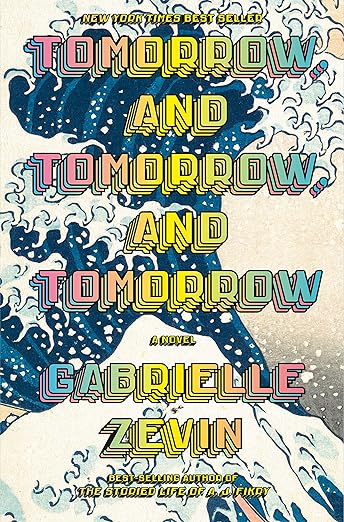
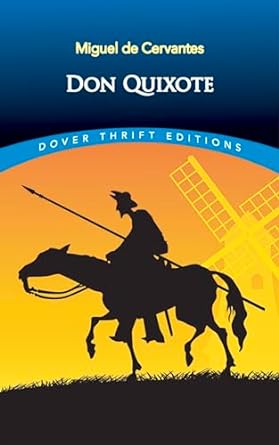
Novella
Novella: Definition and characteristics
A novella is a work of fiction that falls between a short story and a novel in terms of length and complexity. It is longer and more substantial than a short story but shorter than a full-length novel. Novellas typically range from about 20,000 to 40,000 words, although there is no strict word count definition.
Here are some key characteristics of novellas:
- Length: Novellas are shorter than novels but longer than short stories. They typically offer more depth and complexity than short stories while maintaining a sense of conciseness.
- Focus: Novellas often focus on a single narrative arc or a limited number of characters, allowing for a more concentrated exploration of themes and ideas.
- Character development: Despite their shorter length, novellas can feature well-developed characters with complex motivations and relationships. Authors have the space to delve into their characters’ inner lives and explore their thoughts, feelings and experiences in depth.
- Plot complexity: While novellas may not have the sprawling, multi-layered plots of novels, they can still encompass a significant amount of narrative complexity. Novellas often feature a central conflict or dilemma that drives the story forward, with room for twists, turns and unexpected developments.
- Themes: Novellas can explore many themes and ideas, from love and loss to identity and redemption. The shorter length allows authors to focus on a particular theme or issue and explore it in depth, often with a sense of urgency or intensity.
- Structure: Novellas may employ various narrative structures, including linear, non-linear or experimental forms. The structure of a novella is often tailored to the specific needs of the story being told, allowing for creative experimentation and innovation.
Novella: Origins and development
The origins and development of the novella trace back to ancient and medieval literature. However, the term ‘novella’ as a distinct literary form emerged during the Renaissance and evolved over the centuries.
- Ancient and medieval origins: The novella has roots in ancient and medieval prose narratives, including Greek and Roman works such as fables, anecdotes and short tales. These early narratives often focused on moral or didactic themes and were circulated orally or in written form.
- Renaissance and early modern period: The term ‘novella’ gained prominence during the Renaissance, particularly in Italy, where it referred to short prose works that were distinct from longer, epic forms. Italian authors such as Giovanni Boccaccio and Matteo Bandello popularised the novella as a literary genre with works like ‘The Decameron’ and ‘Novelle.’
- Nineteenth century: The nineteenth century saw a resurgence of interest in the novella as a literary form, particularly in Europe. Writers like Johann Wolfgang von Goethe (The Sorrows of Young Werther) and Leo Tolstoy (The Death of Ivan Ilyich) produced notable novellas. These works explored themes of love, morality and existential crisis.
- Modern novellas: In the twentieth century, the novella continued to evolve and thrive as a literary form. Writers such as Joseph Conrad (‘Heart of Darkness’) and Ernest Hemingway (The Old Man and the Sea) experimented with the novella format.
- Twenty-first century: Despite its intermittent popularity compared to the novel and short story, the novella has experienced a revival in recent years. Many contemporary authors have embraced the novella as a flexible and effective form for exploring complex themes and characters. Notable contemporary novella authors include Alice Munro and Chimamanda Ngozi Adichie.
Famous novella examples
A Christmas Carol by Charles Dickens
This classic novella tells the story of Ebenezer Scrooge, a miserly older man who transforms after being visited by the ghosts of Christmas Past, Present and Yet to Come. A Christmas Carol is celebrated for its timeless themes of redemption, generosity and the spirit of Christmas.
The Assassin’s Blade by Sarah J. Maas
This collection of novellas serves as a prequel to Maas’s popular Throne of Glass series. It follows the adventures of Celaena Sardothien as she navigates the dangerous world of assassins and uncovers secrets about her past.
Finding Cinderella by Colleen Hoover
Finding Cinderella is a novella that follows the romance between Daniel and Six, two characters from Hoover’s novel Hopeless. It explores themes of love, loss and second chances in a heartwarming and emotionally resonant story.
The Slow Regard of Silent Things by Patrick Rothfuss
Set in the world of Rothfuss’s Kingkiller Chronicle series, the novella focuses on Auri and her life in the mysterious Underthing. It offers a unique and intimate glimpse into Auri’s world and psyche.
Dawnshard by Brandon Sanderson
Dawnshard is a novella set in Sanderson’s Cosmere universe, specifically in the world of Roshar. It follows the character Rysn as she embarks on a dangerous mission to uncover the secrets of the Dawnshard, ancient artefacts with immense power.
Crank Palace by James Dashner
Crank Palace is a novella set in the Maze Runner series universe. It follows the character Newt as he navigates the deadly trials of the Maze and grapples with the moral dilemmas posed by the WICKED organisation.
Different Seasons by Stephen King
Different Seasons is a collection of four novellas by Stephen King, including ‘Rita Hayworth and Shawshank Redemption,’ ‘Apt Pupil,’ ‘The Body’ and ‘The Breathing Method.’ Each novella explores different themes and genres, showcasing King’s versatility as a writer. Notably, two of them —‘The Body’ and ‘Rita Hayworth and Shawshank Redemption’ — inspired film adaptations, Stand by Me (1986) and Shawshank Redemption (1994), respectively.
This Winter by Alice Oseman
This Winter is a novella set in Oseman’s Heartstopper universe. It focuses on the characters Nick and Charlie as they navigate their relationship during the holiday season. The novella explores themes of love, friendship and self-discovery with Oseman’s signature warmth and humour.
Every Morning the Way Home Gets Longer and Longer by Fredrik Backman
This novella by Backman tells the poignant story of an older adult grappling with dementia and his grandson, who is trying to come to terms with the impending loss of his beloved grandfather. Through lyrical prose and heartfelt storytelling, Backman explores themes of memory, family and the passage of time.
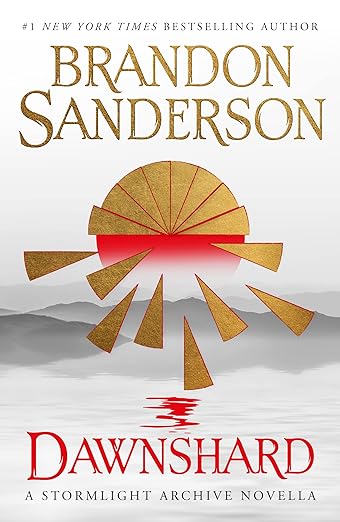
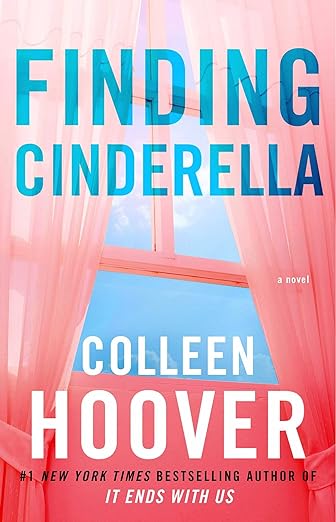
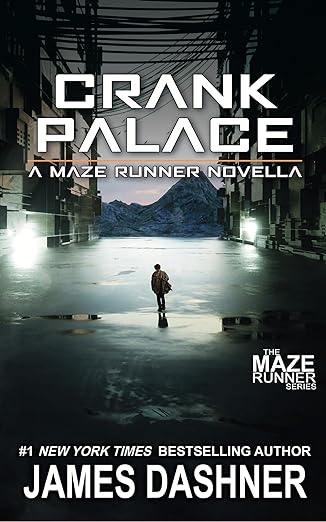
Novelette
Novelette: Definition and characteristics
A novelette is a work of fiction that falls between a short story and a novella in terms of length and complexity. It is shorter than a novella but longer than a short story, typically about 7,500 to 20,000 words. However, the exact word count can vary depending on literary conventions and publishers.
Here are some key characteristics of a novelette:
- Length: Novelettes are shorter than novellas but longer than short stories. They offer authors more space and flexibility than short stories to develop characters, plot and themes. Still, they are more concise and focused than novellas.
- Narrative focus: Novelettes often focus on a single narrative arc or a limited number of characters. This focused approach allows for a more in-depth exploration of the central conflict or theme while maintaining a sense of brevity and momentum.
- Character development: Despite their shorter length, novelettes can feature well-developed characters with distinct personalities, motivations and arcs. Authors can explore their characters’ inner lives and their relationships and growth throughout the story.
- Plot complexity: Novelettes typically feature a central conflict or dilemma that drives the narrative forward. While they may not have the sprawling, multi-layered plots of novels or novellas, they can still encompass significant narrative complexity, including twists, turns and unexpected developments.
- Themes and ideas: Novelettes can explore a wide range of themes and ideas, from love and loss to identity and redemption. They can offer thought-provoking insights into the human condition and society despite their shorter length.
Novelette: Origins and development
The origins of the novelette genre can be traced back to the development of prose fiction in the nineteenth century, particularly during the Romantic and Victorian periods. While shorter forms of fiction had existed for centuries, the term ‘novelette’ and its recognition as a distinct literary genre occurred during this time.
- Expansion of literary markets: During the nineteenth century, advancements in printing technology and the growth of literary magazines and newspapers led to an increased demand for serialised fiction. Authors began writing shorter works that could be published in instalments, catering to the growing appetite for literary entertainment among the reading public.
- Evolution of literary forms: The nineteenth century witnessed many literary forms and genres, including the novel, novella, short story and novelette. While novels and novellas tended to be more expansive in scope and length, shorter works like short stories and novelettes offered authors opportunities to experiment with narrative techniques and explore more focused themes and ideas.
- Serial publication: Many early examples of the novelette genre were published in serialised form in literary magazines and periodicals. These serialised works often featured episodic narratives with cliffhanger endings, enticing readers to follow the story in subsequent instalments.
- Literary movements and influences: The emergence of Romanticism and realism as dominant literary movements in the nineteenth century influenced the development of the novelette genre. Romantic novelettes often featured themes of love, nature and the supernatural. In contrast, realist novelettes explored everyday life, social issues and psychological complexities.
- Authors and works: Several prominent authors of the nineteenth century contributed to the development of the novelette genre. Writers like Edgar Allan Poe, Nathaniel Hawthorne, and Washington Irving in the US and Honore de Balzac, Guy de Maupassant, and Leo Tolstoy in Europe wrote notable examples of the novelette form.
Famous novelette examples
‘Nightfall’ by Isaac Asimov
‘Nightfall’ is a sci-fi novelette published in 1941. It explores the consequences of a civilisation living on a planet with multiple suns, where darkness falls only once every several thousand years. As darkness descends, chaos ensues, leading to a profound revelation about the nature of human civilisation. ‘Nightfall’ is part of the Nightfall and Other Stories collection.
‘Nine Lives’ by Ursula K. Le Guin
‘Nine Lives’ is a sci-fi novelette first published in 1969 in Playboy magazine. Set on a distant planet, the story follows the crew of a research mission who discover a unique alien species with a mysterious ability to regenerate after death. Le Guin uses the premise to explore themes of identity, mortality and the nature of consciousness. ‘Nine Lives’ is part of the The Wind’s Twelve Quarters collection.
The Coronation Ball: A Four Kingdoms Cinderella Novelette by Melanie Cellier
In this retelling of the classic Cinderella story, Cellier transports readers to her Four Kingdoms universe. There, Cinderella must navigate political intrigue and royal machinations to attend the coronation ball of Prince Charles. The novelette offers a fresh take on the timeless fairy tale with romance, adventure and fantasy elements.
‘The Lottery’ by Shirley Jackson
‘The Lottery’ was originally published in 1948 in the New Yorker magazine. Later, it was reprinted in The Lottery and Other Stories collection. It is a chilling novelette set in a seemingly idyllic small town where the residents participate in an annual lottery with horrifying consequences. Jackson’s tale explores themes of conformity, tradition and the darker aspects of human nature.
The Metamorphosis by Franz Kafka
The Metamorphosis is a classic work of literature first published in 1915. The novelette follows the transformation of Gregor Samsa, a travelling salesman, into a giant insect and the subsequent impact on his family. Kafka’s surreal and existential tale delves into themes of alienation, identity and the absurdity of existence. It has inspired several film adaptations, including The Fly (1986), directed by David Cronenberg, with Jeff Goldblum and Geena Davis.
The Turn of the Screw by Henry James
Published in 1898, The Turn of the Screw is a Gothic horror novelette. It follows a governess who becomes convinced that evil spirits are haunting the children in her care. James’s atmospheric and psychologically complex narrative blurs the line between reality and imagination, leaving readers questioning the nature of evil and madness.
‘The Body’ by Stephen King
Part of King’s collection Different Seasons, ‘The Body’ is a novelette about four boys who set out to find the body of a missing boy in the woods. Set in the 1960s, the story explores friendship, adolescence and the loss of innocence. ‘The Body’ inspired a film adaptation, Stand by Me (1986), directed by Rob Reiner.
‘Brokeback Mountain’ by Annie Proulx
‘Brokeback Mountain’ was initially published in 1997 in the New Yorker magazine. Later, the story was published in the Close Range collection. Proulx’s novelette tells the story of two cowboys, Ennis Del Mar and Jack Twist, who develop a complex and forbidden relationship while working together as sheepherders in Wyoming. Proulx’s poignant tale explores themes of love, identity and the struggle for acceptance in a conservative society. It inspired the major motion picture (2005) directed by Ang Lee, starring Jake Gyllenhaal and Heath Ledger.

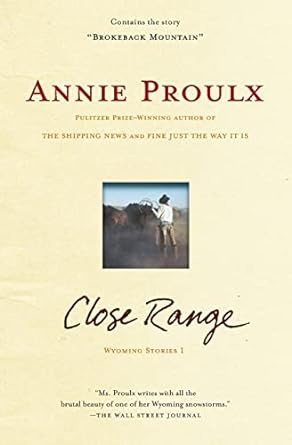
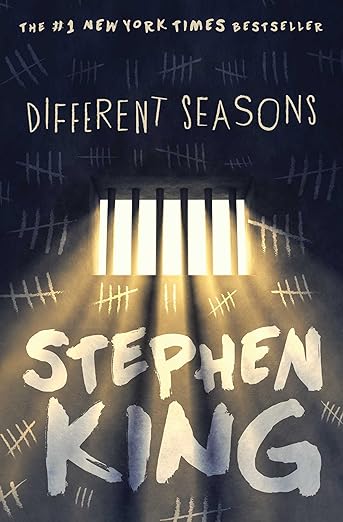
Novel, novella, novelette: Similarities and differences
Here is a comparison of the aspects of the novel, novella and novelette genres:
Word count
- Novel: Typically over 50,000 words, though this can vary widely depending on genre and publisher preferences.
- Novella: Generally between 20,000 and 50,000 words.
- Novelette: Typically between 7,500 and 20,000 words.
Structure
- Novel: More complex structure with multiple subplots, characters and settings.
- Novella: Generally simpler structure with fewer subplots and characters, allowing for a more focused narrative.
- Novelette: Often a single plot line with minimal subplots or complexity.
Character development
- Novel: Allows for extensive character development due to the longer length, providing ample space for characters to evolve and grow.
- Novella: Character development is still significant but may be more focused or streamlined than a novel.
- Novelette: Character development is limited compared to longer forms but still present within the constraints of the shorter length.
Narrative arc
- Novel: Typically consists of multiple arcs, including exposition, rising action, climax, falling action and resolution.
- Novella: Generally has a condensed narrative arc, with fewer peaks and valleys compared to a novel.
- Novelette: Usually a simpler narrative arc with a more straightforward progression.
Themes and focus
- Novel: Can explore multiple themes in depth and may have a broader focus.
- Novella: Often focuses on a single theme or a few closely related themes due to the shorter length.
- Novelette: Generally has a narrower focus on one central theme or idea.
Impact
- Novel: Can have a profound and lasting impact on readers due to its depth and complexity.
- Novella: Can still leave a significant impact, often through its concentrated storytelling and emotional resonance.
- Novelette: While shorter, it can still leave a mark with its concise storytelling and focused themes.
Writing process
- Novel: Requires long-term planning, extensive world-building and sustained effort over an extended period.
- Novella: Still requires planning and development but on a shorter timescale than a novel.
- Novelette: Requires concise storytelling and careful selection of plot elements due to the limited word count.
Publishing
- Novels Can be published as standalone works or as part of a series, and various publishing options are available.
- Novella: Often published individually but can also be part of a collection or anthology. Some publishers specialise in novella-length works.
- Novelette: Usually published as part of a collection or anthology, although standalone publications are also possible, especially in digital formats.
Novel, novella, novelette: Preparing for publication
Editing services play a crucial role in preparing novels, novellas, and novelettes for publishing by refining the manuscript to ensure it meets professional standards and resonates with the target audience. Here is how different types of editing services can contribute to the publishing process:
Developmental editing
Developmental editors focus on the big-picture elements of a manuscript. They include plot, character development, pacing, structure and overall coherence. For novels, novellas, and novelettes, developmental editing can help shape the story arc, strengthen character motivations and ensure consistency throughout the narrative. Developmental editing also involves identifying areas where the story may need expansion or trimming to improve its flow and impact.
Copyediting
Copyeditors examine the details of the manuscript, focusing on grammar, punctuation, syntax, spelling, and style consistency. For novels, novellas, novelettes, copyediting ensures the text is polished and free of errors that could distract readers from the story. Copyeditors may also address issues like clarity, awkward phrasing and inconsistencies in character or setting details.
Line editing
Line editors work at the sentence and paragraph level, refining the prose for clarity, style, and readability. In novels, novellas, novelettes, line editing can enhance the writing by improving sentence structure, word choice and narrative voice. Line editors focus on creating smooth transitions between scenes, tightening the prose and eliminating repetition or unnecessary verbosity.
Proofreading
Proofreaders perform a final check for typos, formatting errors and other minor mistakes before publication. While proofreading is often the last step in the editing process, it is still essential to catch any lingering errors that may have been missed during earlier editing stages.
Formatting and layout
Formatting services ensure that the manuscript is properly formatted according to publishing industry standards. For novels, novellas, novelettes, formatting includes chapter headings, page breaks, font styles and alignment. Layout services focus on designing the interior layout of the book. They focus on margins, typography and pagination to create an attractive and professional-looking final product.
Key takeaways
Novels, novellas, novelettes represent distinct forms of fiction distinguished by their length and narrative complexity. Novels are expansive narratives with intricate plots and character development, exemplified by works like Don Quixote and ‘All the Light We Cannot See.’ Novellas balance depth and brevity, focusing on a single narrative arc with examples such as A Christmas Carol and The Metamorphosis. Novelettes deliver concise storytelling with impactful themes, as seen in works like ‘The Lottery’ and ‘Nightfall.’ Despite their differences, all three forms share common elements of character development and thematic exploration.
Preparation for publication of these genres may involve various editing services, ensuring they meet professional standards and resonate with its audience. Developmental editing shapes the narrative, and line editing refines prose. In turn, copyediting ensures correctness and consistency. Proofreading catches final errors, and formatting and layout deliver a professional presentation.
Contact me for a free sample edit of your novel, novella or novelette manuscript (and remember to use my early bird discount). I am an experienced editor working with non-fiction, academic and business texts. I can help prepare your text for publication, from a big-picture analysis through highlighting your authorial voice to ensuring the correctness and consistency of the language.


